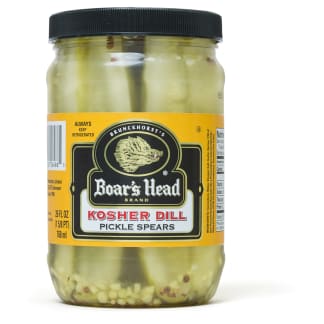Reviews You Can Trust.
See Why.
Supermarket Sauerkraut
To find out which kraut is king, we tried six nationally available supermarket sauerkrauts plain, with hot dogs, and in pierogi.
Top Picks
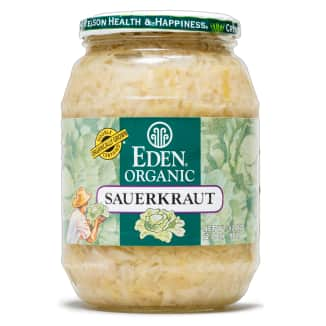
WinnerEden Organic Sauerkraut
With a “slight sweetness” and subtle notes of “zing” and “funk,” this jarred kraut lent a “bright” tanginess that “complemented” but “didn’t overpower” the main dish. Tasters thought this product’s “smaller” shreds were “soft,” with “just a bit of chew,” perfect for piling atop hot dogs and stuffing in pierogi.
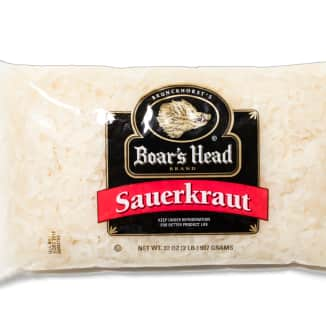
Boar’s Head Sauerkraut
Though “moderately tangy,” with a “mild flavor” that was appreciated by some conservative tasters, this bagged kraut was permeated by a “chemical,” “almost chlorinated” sourness. Most tasters thought this brand’s texture was “rubbery” and “overly crisp,” “more like shredded cabbage than sauerkraut.”
Sign up for the Well-Equipped Cook newsletter
Shop smarter with our ATK Reviews team's expert guides and recommendations.
What You Need to Know
Sauerkraut isn’t for everybody. The pungent acidity of fermented cabbage can be polarizing, but fans of this zesty condiment swear by its ability to add refreshing tang to rich meats or hearty potatoes. To find out which kraut is king, we tried six nationally available supermarket sauerkrauts plain, with hot dogs, and in pierogi. Sauerkraut has a similar tanginess to pickled foods, but unlike most supermarket pickles, sauerkraut contains no vinegar. Instead, it gets its acidity from fermentation: Shredded cabbage is sprinkled with salt, packed in containers, and left to sit at room temperature for 1 to 6 weeks. During this time, natural bacteria and yeasts eat away at sugars in the cabbage, leaving behind tart lactic acid in their wake. Once manufacturers deem the sauerkraut suitably tangy, it’s packed into jars, cans, or bags along with some water to prevent browning.
While it only takes three ingredients to make sauerkraut—cabbage, salt, and water—our tasters detected “off,” “chemical” flavors in three lower-ranked sauerkrauts. A peek at ingredient labels revealed that these products all added sodium benzoate and sodium bisulfate—preservatives that extend shelf life. With so few other ingredients to mask off-flavors, sauerkrauts with chemical preservatives had a prominent “fizzy,” “sulfuric,” almost “ammonia-like” quality, even when tasted atop hot dogs or in pierogi. Tasters preferred products that contained just the core three ingredients, calling them “fresher,” “brighter,” and “classic.”
Since salt enhances flavor, it wasn’t surprising that our favorite products also contain more sodium. We liked the “punchy,” “zippy” flavor of sauerkrauts with 200 milligrams of sodium or more per 2-tablespoon serving. No kraut was too salty for tasters, who thought more salt made for kraut with a hearty, fermented flavor; those with any less just tasted like wet cabbage.
What did surprise us, though, was that these sharper, brighter-tasting krauts were packaged in shelf-stable jars or cans, while lower-ranked products were packed in refrigerated plastic bags. Though we often assume that the products we buy in the refrigerated section of the supermarket are fresher than their shelf-stable counterparts, our science editor explained that in this case, they’re not. Unlike jars and cans, plastic bags let in small amounts of air over time, which degrades some of the sauerkraut’s pungent flavor. This is also why bagged products are the only ones to add preservatives: Unlike the canned and jarred krauts, their packaging alone isn’t enough to prevent the growth of microorganisms.
In addition to tasting fresher, canned and jarred sauerkrauts also had a softer, more tender texture. Bagged sauerkrauts were tough and crunchy, which tasters found distracting on hot dogs and in pierogi. A condiment should know its place, and we preferred softer krauts with only a hint of crunch to complement a dish. Lower-ranked products also had strands that were large and uneven, as if they had been roughly chopped with a knife, while our favorite krauts had small and uniform shreds, like they had been shredded with a grater. Big, chunky krauts slipped off hot dogs and crunched unpleasantly in pierogi; we preferred smaller shreds with good cling and subtle chew.
Our favorite was Eden Organic Sauerkraut, a jarred kraut with punchy, tangy flavor and even, delicate shreds. A bonus: Its jar makes refrigerating leftovers easier, so we can keep this kraut on hand for heaping on hot dogs all summer long.
Cook's CountryWatch Now
Everything We Tested
Recommended

WinnerEden Organic Sauerkraut

Libby’s Sauerkraut
Recommended with reservations
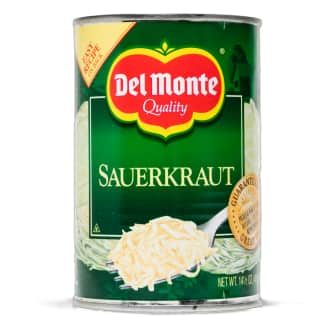
Del Monte Sauerkraut

Silver Floss Krrrrisp Kraut

Boar’s Head Sauerkraut
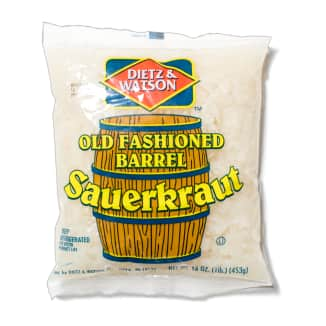
Dietz & Watson Old Fashioned Barrel Sauerkraut
*All products reviewed by America’s Test Kitchen are independently chosen, researched, and reviewed by our editors. We buy products for testing at retail locations and do not accept unsolicited samples for testing. We list suggested sources for recommended products as a convenience to our readers but do not endorse specific retailers. When you choose to purchase our editorial recommendations from the links we provide, we may earn an affiliate commission. Prices are subject to change.
Reviews You Can Trust
The mission of America’s Test Kitchen Reviews is to find the best equipment and ingredients for the home cook through rigorous, hands-on testing. Have a question or suggestion? Send us an email at atkreviews@americastestkitchen.com. We appreciate your feedback!
Reviews You Can Trust.
See Why.

